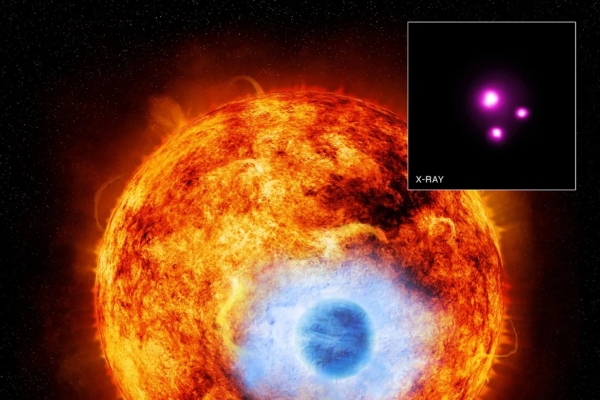Imagine a world where the pervasive odor of rotten eggs fills the air – there is perhaps nothing more unpleasant. Astronomers have recently come across a gas giant the size of Jupiter, with traces of hydrogen sulfide present in its atmosphere.
Even at low concentrations in the air, this molecule emits the noxious smell of rotten eggs. The exoplanet, designated HD 189733 b, is located 64 light-years away from Earth and orbits a star outside our solar system, initially detected in 2005.
Scientists conducted a study of the atmosphere of HD 189733 b using data from the James Webb Space Telescope. They discovered that the temperature here is extremely high, reaching up to 1,700 degrees Fahrenheit, and glass rain falls from the sky.
Research suggests that hydrogen sulfide, also found on Jupiter, makes up a significant portion of the atmosphere of HD 189733 b, emitting some “popping” sounds.
This marks the first time scientists have found hydrogen sulfide on an exoplanet. The findings of this study were published in the journal “Nature.”
As part of a new study by researchers, the James Webb Space Telescope’s observations in the infrared wavelength revealed the composition of the exoplanet’s atmosphere.
Dr. Guangwei Fu, an astrophysicist at Johns Hopkins University and leader of this research, remarked, “If your nose could work at a temperature of 1,000 degrees Celsius… there would be a smell of rotten eggs in the atmosphere.”
While hydrogen sulfide is one of the gases indicating that distant planets could be potential alien habitats, researchers have not found any signs of life on this planet due to its nature as a gaseous giant like Jupiter with extreme temperatures.
Nonetheless, they consider the discovery of hydrogen sulfide here as a step towards understanding planet formation. Researchers credit the James Webb Space Telescope for this new finding.
“It changes the game. It is truly a revolution in the field of astronomy,” said Dr. Fu Guangwei.
Researchers plan to utilize the information provided by the space telescope to study more planets in the future.
Previously, observations conducted by NASA’s Hubble Space Telescope on HD 189733 b confirmed that the planet’s lower atmosphere appears deep blue due to the preferential scattering of blue light by silicate particles in its atmosphere.

